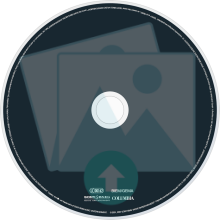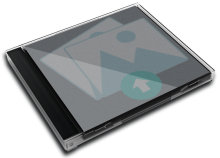
Cover NOT yet available in
Join up for 4K upload/download access
Your Rating (Click a star below)
![]()
![]()
![]()
![]()
![]()
![]()
![]()
![]()
![]()
![]()
Track List
01) Happiness in Slavery (remixed by Trent Rezno
02) Happiness in Slavery (Sherwood Slave mix)
03) Happiness in Slavery (PK Slavery remix)
04) Happiness in Slavery
01) Happiness in Slavery (remixed by Trent Rezno
02) Happiness in Slavery (Sherwood Slave mix)
03) Happiness in Slavery (PK Slavery remix)
04) Happiness in Slavery
6:08
2:17
5:42
5:21
Data Complete 60%
Total Rating
Total Rating
![]() (0 users)
(0 users)
Back Cover![]()
CD Art
3D Case
3D Thumb
3D Flat
3D Face
3D Spine
First Released
![]() 1992
1992
![]() Industrial Metal
Industrial Metal
![]() Confrontational
Confrontational
![]() Metal
Metal
![]() ---
---
![]() ---
---
![]() Single
Single
![]() 0 copies
0 copies
Album Description
Available in:
"Happiness in Slavery" is a song by the American act Nine Inch Nails. The song takes its title and refrain from Jean Paulhan's preface to Story of O. It is available on the Broken EP and was also released as a 12" promotional single in November 1992. The song peaked at number 13 on the U.S. Billboard Modern Rock Tracks chart.
Nine Inch Nails' performance of "Happiness in Slavery" at Woodstock '94, included on the concert's compilation album, won the Grammy Award for Best Metal Performance in 1996. The song's music video was almost universally banned for its depiction of Bob Flanagan being tortured by a machine.
The music video for "Happiness in Slavery," directed by Jon Reiss, features performance artist Bob Flanagan entering a large room. He places a flower and a candle on an altar and in a ritualistic style prepares for something; by washing himself before becoming strapped into a machine with long robotic claws that arise from the machine and subsequently tear apart his skin and impale his hands. The man reacts in pleasure as this occurs. There are also drills that drill into his skin in various places letting his blood drip onto the floor beneath, where there is a garden apparently being fertilized by human blood.
Later in the video, large grinders emerge from the machine to cause extreme injury to the man's skin. As he continues to scream in a mixture of pleasure and pain, the machine begins to disembowel him, ultimately killing him. It then engulfs the man's body in a metal cask and minces it into fertilizer for the garden below. In the conclusion, Trent Reznor, who had been singing the lyrics inside a cell at the beginning of the video, enters the room and it is left ambiguous whether he is the next participant or if he is the curator of the room.
The video was almost universally banned once released.[citation needed] It was later included in Closure and the Broken Movie. It was featured on Too Much 4 Much, MuchMusic's showcase of videos banned from their regular programming.
Reznor commented that the video was not created for shock value, but that "these were the most appropriate visuals for the song." It had to do with his artistic freedom at the time after his fallout with TVT Records.

User Album Review
None...
External Album Reviews
None...
User Comments


Available in:
"Happiness in Slavery" is a song by the American act Nine Inch Nails. The song takes its title and refrain from Jean Paulhan's preface to Story of O. It is available on the Broken EP and was also released as a 12" promotional single in November 1992. The song peaked at number 13 on the U.S. Billboard Modern Rock Tracks chart.
Nine Inch Nails' performance of "Happiness in Slavery" at Woodstock '94, included on the concert's compilation album, won the Grammy Award for Best Metal Performance in 1996. The song's music video was almost universally banned for its depiction of Bob Flanagan being tortured by a machine.
The music video for "Happiness in Slavery," directed by Jon Reiss, features performance artist Bob Flanagan entering a large room. He places a flower and a candle on an altar and in a ritualistic style prepares for something; by washing himself before becoming strapped into a machine with long robotic claws that arise from the machine and subsequently tear apart his skin and impale his hands. The man reacts in pleasure as this occurs. There are also drills that drill into his skin in various places letting his blood drip onto the floor beneath, where there is a garden apparently being fertilized by human blood.
Later in the video, large grinders emerge from the machine to cause extreme injury to the man's skin. As he continues to scream in a mixture of pleasure and pain, the machine begins to disembowel him, ultimately killing him. It then engulfs the man's body in a metal cask and minces it into fertilizer for the garden below. In the conclusion, Trent Reznor, who had been singing the lyrics inside a cell at the beginning of the video, enters the room and it is left ambiguous whether he is the next participant or if he is the curator of the room.
The video was almost universally banned once released.[citation needed] It was later included in Closure and the Broken Movie. It was featured on Too Much 4 Much, MuchMusic's showcase of videos banned from their regular programming.
Reznor commented that the video was not created for shock value, but that "these were the most appropriate visuals for the song." It had to do with his artistic freedom at the time after his fallout with TVT Records.
User Album Review
None...
External Album Reviews
None...
User Comments

No comments yet...

